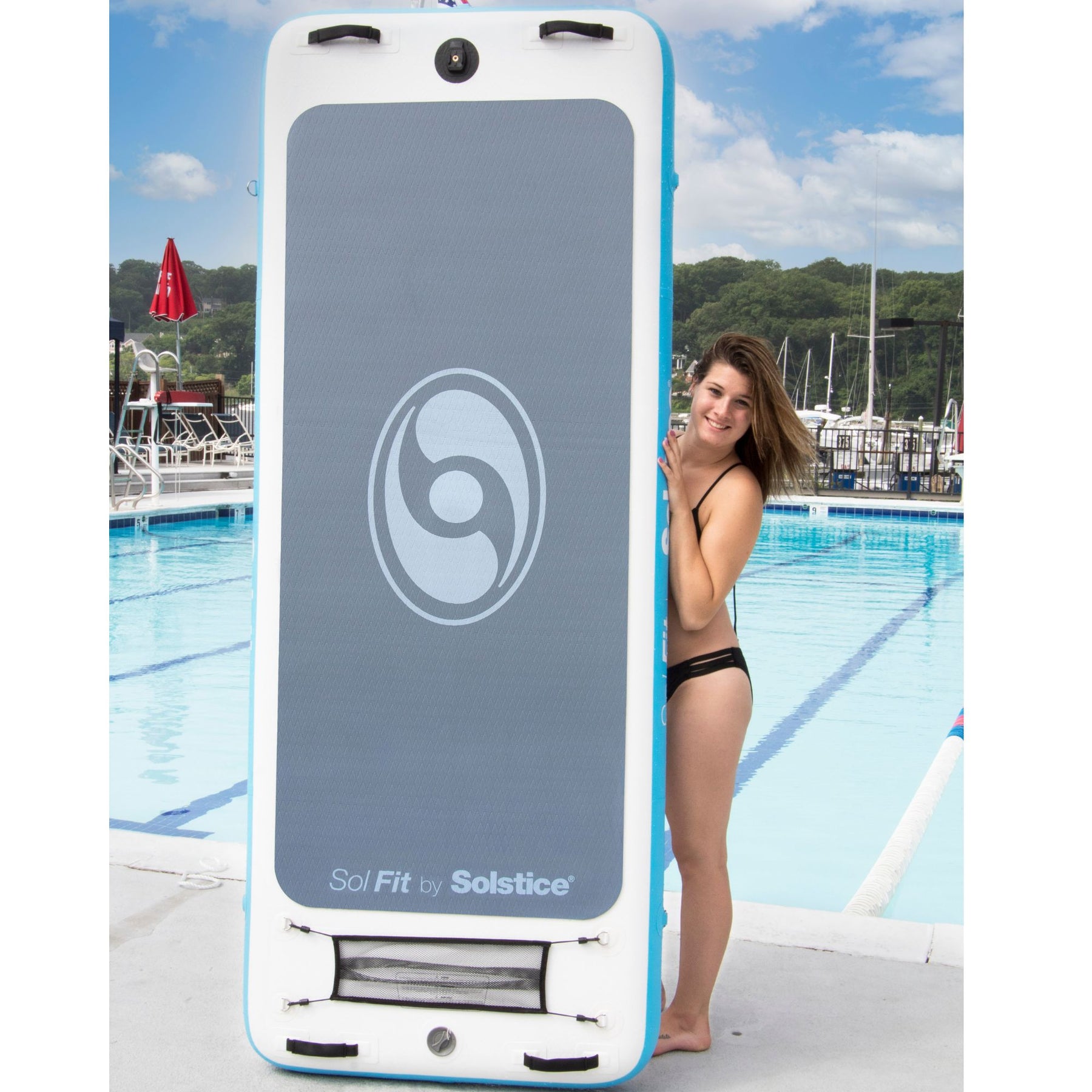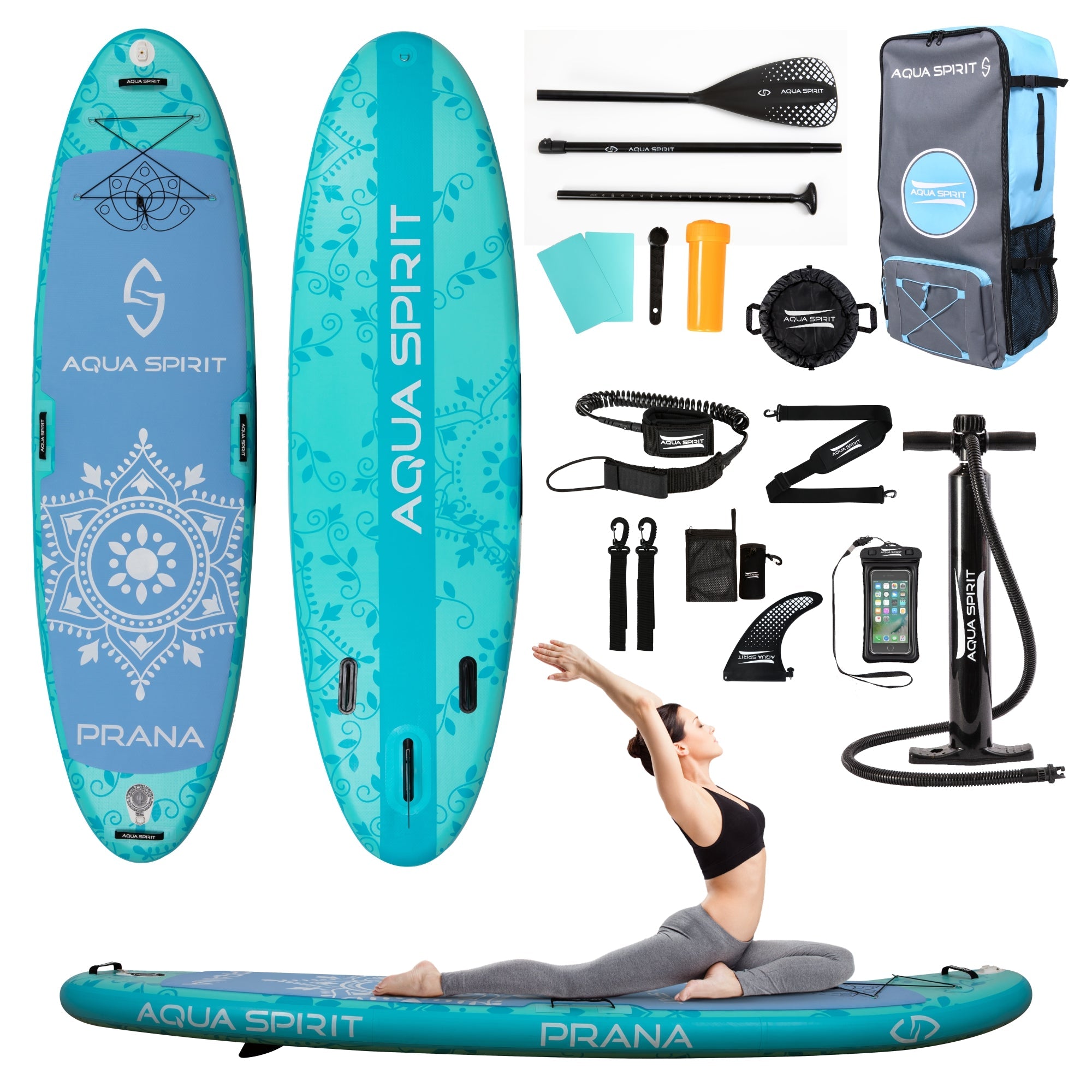Introduction:
Yoga has long been recognised for its many health and well-being benefits, from physical fitness and mental clarity to overall well-being. But have you considered extending your yoga practice into water yoga? Water yoga combines traditional forms with water’s therapeutic properties, becoming increasingly popular with fitness and wellness enthusiasts. In this post, we’ll look at water yoga’s benefits, compare it to traditional forms, and compare its suitability for children.
What is water yoga (aqua yoga)?
Water yoga, often called aqua yoga, adapts traditional yoga poses for use in water environments such as a swimming pool. It uses the resistance and buoyancy provided by water to enhance each pose with greater ease in movement than its land-based counterpart, making it suitable for people of all fitness levels and ages.
Who Can Practice Water Yoga?
Water yoga is ideal for beginners, those with mobility issues, pregnant women, overweight people, people living with arthritis and low bone density, and people who want a low-impact workout option.
How to Practice Water Yoga (Yin yoga)
Water yoga is an innovative form of practice that incorporates classic poses in an aquatic setting. Here are a few ways to practice water yoga.
Asserting yourself in water up to your chest will provide stability.
Increase core engagement and balance using water resistance as a method.
Hold poses slowly to achieve maximum water resistance.
Aqua Yoga Poses That You Should Try Now
Aqua Yoga Poses You Should Try
Water Warrior Pose
- Stand in chest-deep water, stepping one foot forward while keeping the other grounded.
- Stretch your arms out in a traditional Warrior pose.
- Engage your core and balance with the water’s resistance.
Floating Crescent Moon Pose
- Stand with feet hip-width apart in the water.
- Raise one arm overhead, reaching towards the sky.
- Lean to the opposite side, feeling the water’s resistance.
- Inhale for extension, exhale to deepen the stretch.
- Return upright, switch arms, and repeat.
Buoyant Boat Pose
- Sit on the edge of the pool or take a step, leaning slightly back with your legs extended.
- Engage your core muscles, forming a ‘V’ shape with your body.
- Balance with your sitting bones in contact with the edge while your legs are lifted and your torso reclined.
Water Tree Pose
- Stand in waist-deep water.
- Plant your weight firmly on one leg, anchoring it securely to the pool floor.
- Lift your opposite foot, placing the sole against your standing leg’s inner calf or thigh.
- Bring your hands together at the heart centre in a prayer position.
- Focus your gaze on a steady point to maintain balance.
- Switch legs and repeat.
Before You Dive In
Aqua yoga should be approached with mindfulness and care, just like any exercise regime. For those new to aquatic exercise or yoga, guidance from an aqua yoga instructor could prove invaluable in terms of proper alignment, breathing technique, and understanding the unique dynamics involved with practicing it in water.
How to Begin an Aqua Yoga Practice without a Pool
- Take the plunge: Don’t be daunted by your lack of a swimming pool! Begin using the resources you already possess to overcome hurdles and move forward with your plan.
- Start by practicing some ground poses to familiarise yourself with them.
- Employ Visualisations: Visualise water supporting and resisting your movements throughout the day.
- Embark upon Yoga Philosophy: Apply its principles across every aspect of your life.
- Integrate a yoga pose into your aquatic class.
Where Can I practice water yoga?
Water yoga can be practiced in various environments, including:
Numerous gyms and community centers now provide water yoga sessions in their swimming pools.
Lakes and Oceans: Natural bodies of water offer an idyllic escape, yet precautions must be taken for your safety.
Therapeutic pools: Warm-water therapeutic pools offer the ideal way to alleviate joint issues or provide rehabilitation services.
What are the essential accessories needed?
A few accessories will help make your water yoga practice more effective:

Provides stability and grip when used in water environments.
Noodles & Floatation Devices:
Provide beginners with assistance for maintaining buoyancy and balance.
Water weights can help increase resistance while performing strength training exercises.
Swimwear & accessories

Finding comfortable, non-restrictive swimwear is of utmost importance.
Benefits of Water Yoga Poses:
Water is soothing and promotes relaxation.
Improved Flexibility and Mobility: Movement can increase flexibility and mobility.
Improve breathing patterns: Improving breath quality can improve breathing patterns and decrease fatigue levels.
Detoxification aids the body in detoxifying itself.
Improved Sleep: This helps relax the nervous and mental systems, relieve stress, and aid sleep. It also reduces anxiety and other cognitive disorders.
Enhanced Strength and Circulation:
- Increase blood circulation and muscle tone.
- Water yoga versus traditional yoga
- Water yoga offers many distinct advantages:
Joint-Friendly: Our shoes are specially formulated to be gentler on joints, making them suitable for those with arthritis or injuries.
Water can increase resistance and help build muscles.
Enhanced Relaxation: Water’s soothing qualities enhance the meditative aspect of yoga.
Are There Any Safety Considerations Regarding Water Yoga and Children?
Water yoga is an effective way for kids to cultivate mindfulness and physical activity. However, safety must always come first, and water yoga must always be conducted under the supervision of an adult.
Supervision: Always ensure an adult is present to supervise.
Shallow Water: Make sure children practice swimming in shallow waters.
Floatation Devices: When used correctly, flotation devices can significantly increase safety.
Water Yoga: Research Findings
Water yoga has been shown to benefit both physical and mental health significantly. Studies have demonstrated its efficacy at relieving arthritis-related pain, improving cardiovascular fitness, and encouraging relaxation—perfect for people with mobility issues who require rehab!
Conclusion
Water yoga can be an incredible way to boost your health and well-being. From improving flexibility, strength, or mental clarity to its low-impact nature, therapeutic properties, and suitability for all fitness levels and age ranges, water yoga is an incredible exercise program!